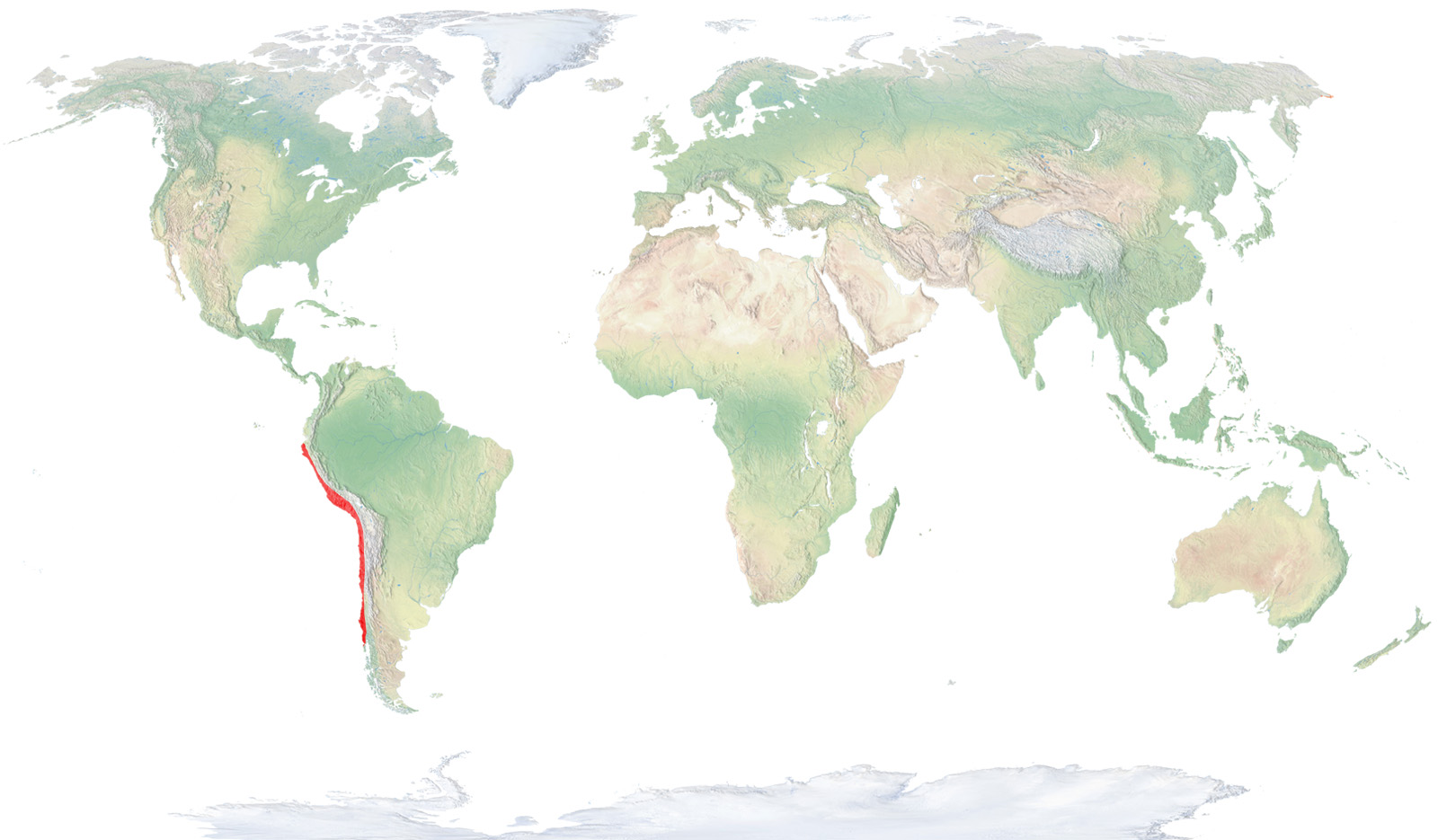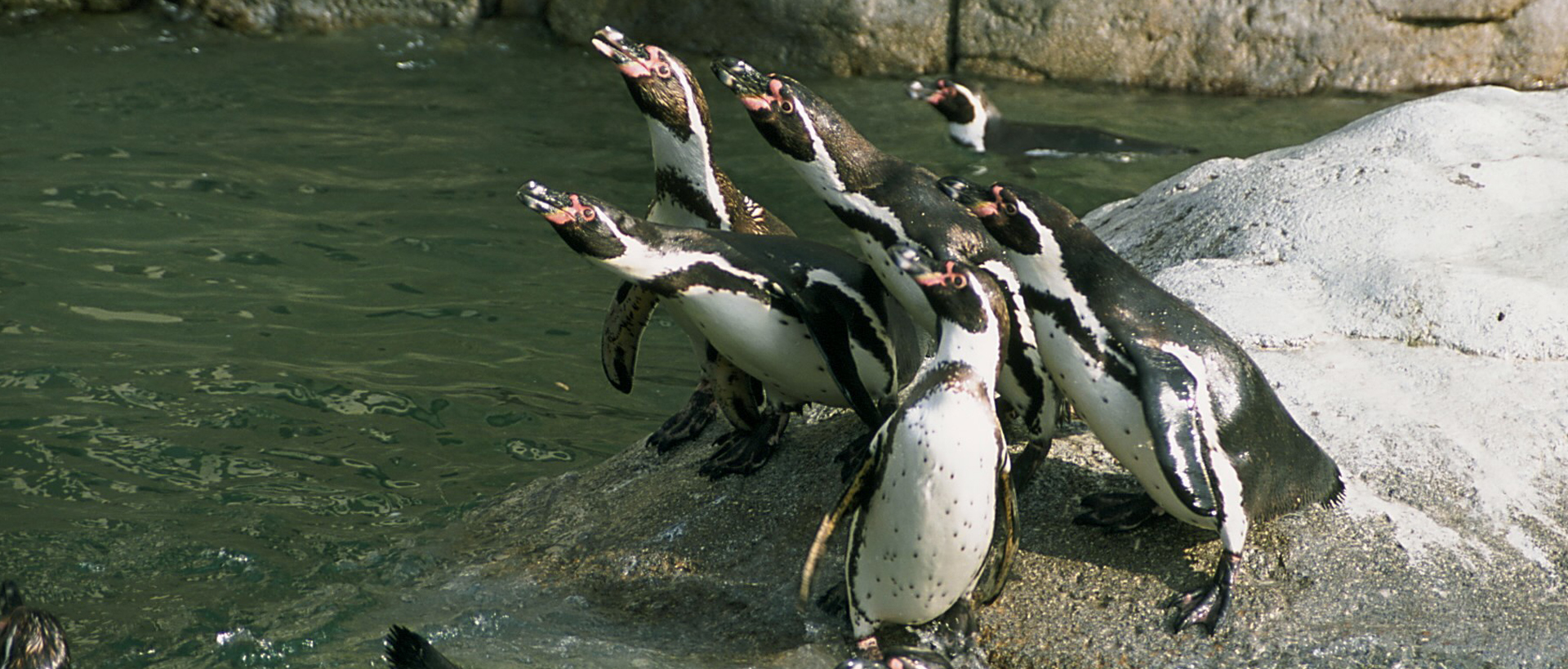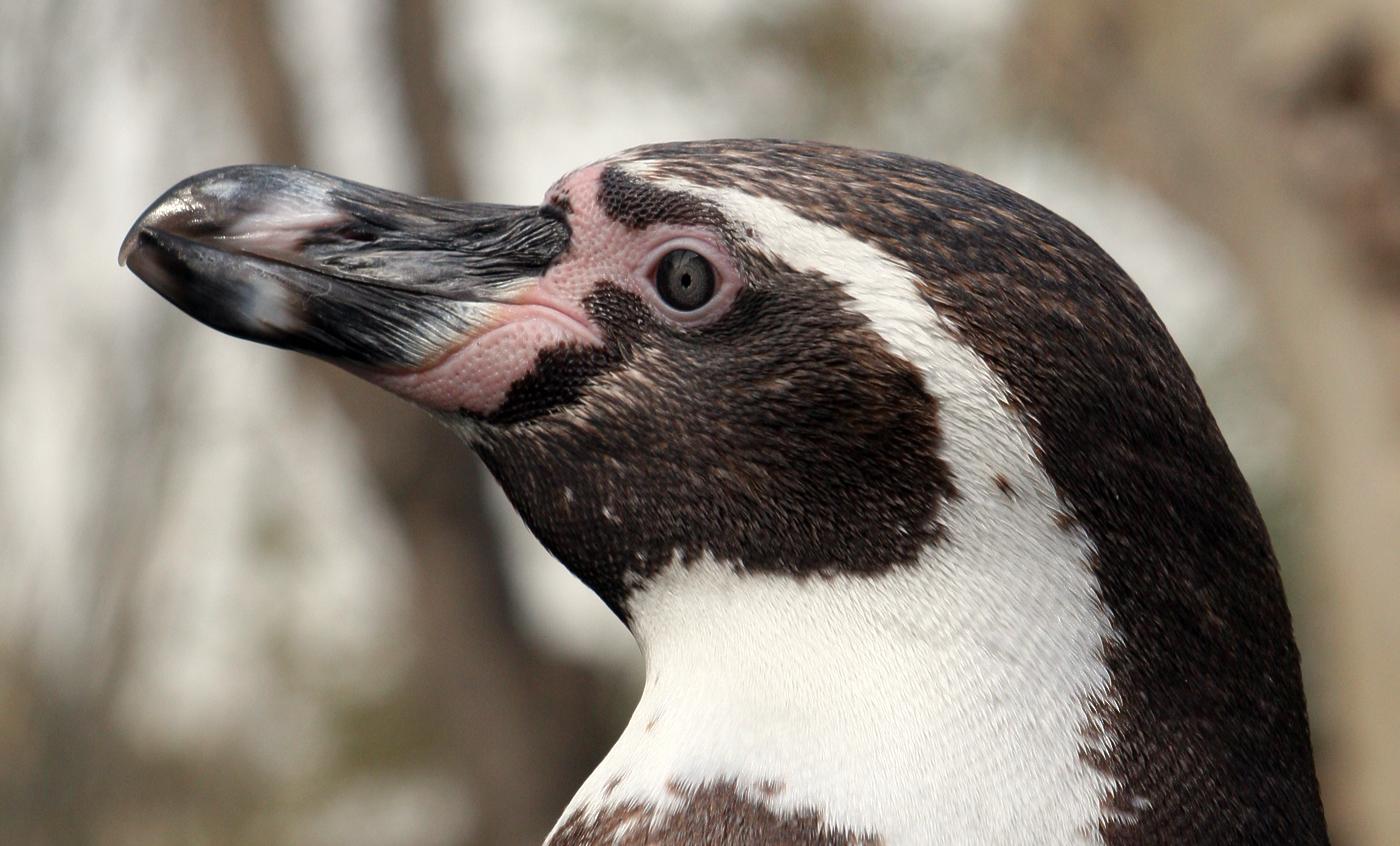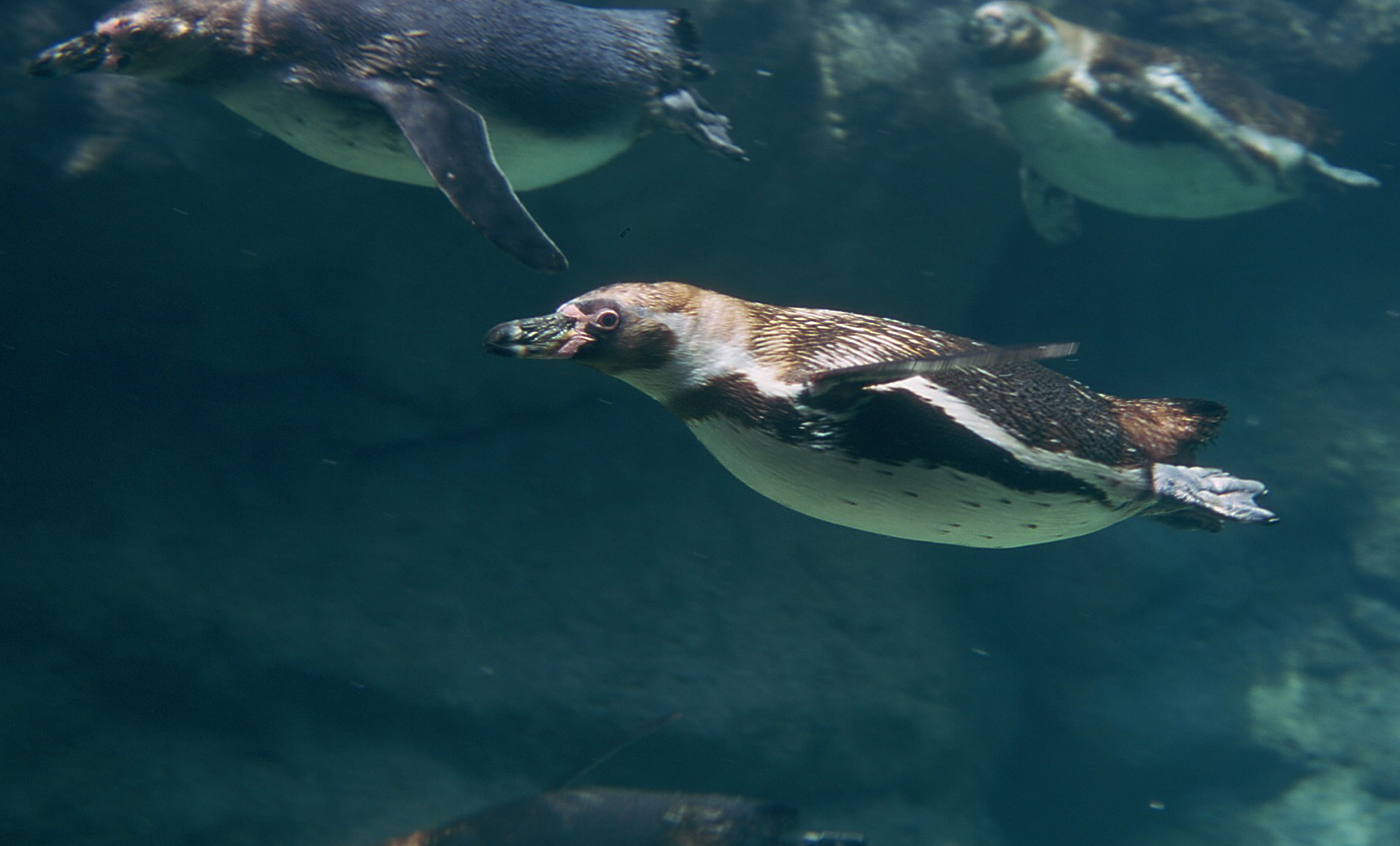Humboldt penguin
Spheniscus humboldti
Penguins have lost the ability to fly but have adapted to marine life thanks to their dense plumage and fin-like wings, which make them fantastic swimmers. They feed on fish, crustaceans and squid.
All the species live in the southern hemisphere and are a characteristic sight in the cold Antarctic regions, although the Humboldt penguin lives further north on the coasts of Chile and Peru, in the area of the Humboldt current.
Natural habit
Pacific coast of Chile and Peru.

- Distribution / Resident
- Breeding
- Wintering
- Subspecies
Risk level
- Extint
- Extint in the wild
- Critically endangered
- In Danger
- Vulnerable
- Near threatened
- Minor concern
- Insufficient data
- Not evaluated
Vulnerable
Taxonomy
Class
Aves
Order
Sphenisciformes
Family
Spheniscidae
Physical characteristics
3-5 kg
Birth Weight:
65-73 cm
Up to 40 years
Biology
Habitat
Sea
Social life
Gregarious
Feeding
Piscivorous
Reproduction
Gestation
38-42
Days
Baby
2
Biology
Description
Humboldt penguins, like all penguin species, are birds that have adapted to sea life and have lost their ability to fly, but are excellent swimmers. They are almost completely adapted to aquatic life, practically only coming onto land during the breeding season.
Consequently, their wings have turned into fins and they have a hydrodynamic body shape. The plumage is dense and impermeable, with three layers of uniformly distributed feathers on the entire body to cut down on resistance in the water and protect their bodies from the cold and moisture. The legs are situated quite far back and they have webbed feet with three sharp claws.
The beak is strong with sharp sides and they have tongues with a spiny appearance, adaptations that let them better catch crustaceans, cephalopods and the fish on which they feed.
Habitat
This penguin species does not live in extremely cold climates, inhabiting the coasts of Chile and Peru, almost to the equator, so that a good part of their area of distribution is in a tropical region. This is possible thanks to the Humboldt sea current, which carries cold, nutrient-rich waters from Antarctica along the western coast of South America.
Feeding
They basically eat fish and squid, as well as different proportions of crustaceans depending on their abundance and time of year. To catch their prey, they can dive down to depths of 30 metres and, during breeding season, both members of the pair alternate taking trips to search for food, and can spend up to 24 consecutive hours before returning to the nest again.
Reproduction
They make nests in holes and fissures on land or in underground dens abandoned by other animals, almost always laying two eggs. They form small breeding colonies, in which each pair defends only a small area surrounding the entrance to the nest. Their territorial cries are quite odd, which sound like the braying of donkeys.
Conduct
They tend to live in pairs or small family groups, although in some sites like the clay deposits on the vertical walls of rivers, they can come together in large groups, often mixed with specimens of other parrot species.
Status and conservation programs
Their natural enemies are orcas, sharks and some sea birds that prey on the young chicks, although mankind is the main party responsible for their critical situation. Thus, their populations have undergone a significant drop in recent years due to fishing fleets that overexploit the schools of sardines and anchovies on which they feed, as well as pollution to the marine ecosystems owing to the frequent accidents of large oil tankers.
This species is protected in appendix I of the Washington Convention, for maximum protection, and is catalogued as vulnerable in the IUCN Red List (International Union for the Conservation of Nature) The individuals at the Barcelona Zoo are part of the EEP for this species.





